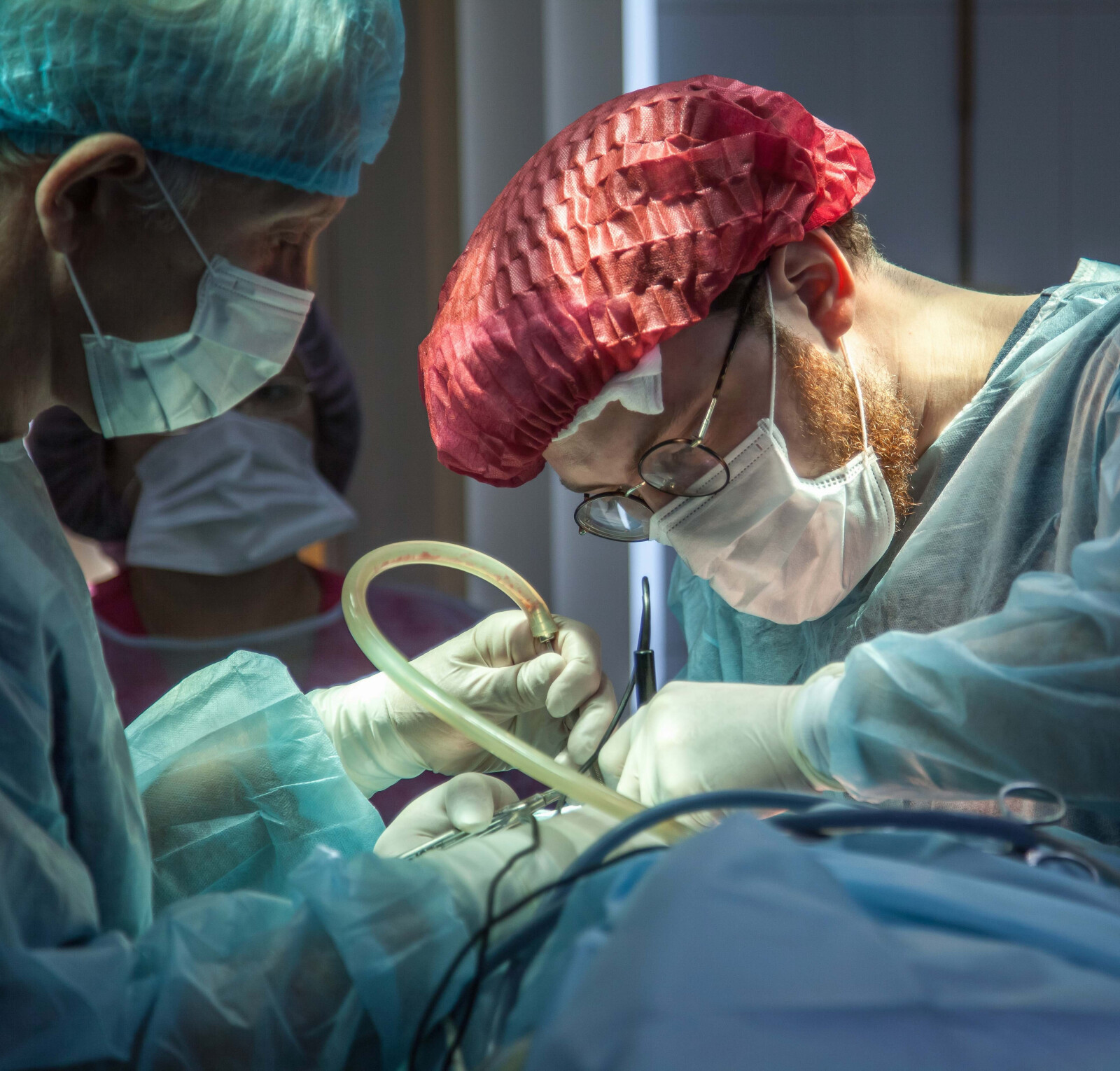Duodenoscope: What Is a Duodenoscope & How Does It Work?
In the complex world of medical technology, the duodenoscope plays a crucial role in diagnosing and treating pancreatic and bile duct diseases. However, its association with antibiotic-resistant infections has raised concerns. This article delves into the functioning of duodenoscopes, the connection with superbug infections, and the steps taken to ensure patient safety. Join us as we unravel the intricacies of this essential instrument and its impact on modern healthcare.

Key Takeaways
- Duodenoscopes are flexible, lighted tubes used in endoscopic retrograde cholangiopancreatography (ERCP) procedures to visualize the duodenum and diagnose/treat diseases in the pancreas and bile ducts.
- Design flaws in duodenoscopes have made them difficult to clean, resulting in outbreaks of antibiotic-resistant superbug infections.
- The FDA has taken regulatory actions and manufacturers have recalled and redesigned duodenoscopes to improve their safety.
- New protocols for surveillance and testing of duodenoscopes have been implemented to monitor for contamination and reduce the spread of infections.
Understanding the Role of Duodenoscopes
To understand the role of duodenoscopes, we must delve into their primary application in endoscopic retrograde cholangiopancreatography (ERCP) procedures, which are instrumental in diagnosing and treating diseases in the pancreas and bile ducts. The importance of proper training for healthcare professionals using duodenoscopes cannot be overstated. Proficiency in handling these intricate devices is crucial to ensuring patient safety and the effectiveness of ERCP procedures. Simultaneously, the role of regular maintenance and inspections in ensuring duodenoscope safety is paramount. These devices have intricate designs and small components that require meticulous cleaning procedures to prevent the risk of cross-contamination. Therefore, a rigorous regimen of maintenance, coupled with systematic inspections, is necessary to safeguard patient health while maximizing the diagnostic and therapeutic potential of duodenoscopes.
The Functioning of Duodenoscopes in Medical Procedures
During the course of an endoscopic retrograde cholangiopancreatography (ERCP) procedure, a duodenoscope plays a vital role in providing doctors with a clear and detailed view of the duodenum, pancreas, and bile ducts. This is achieved through sophisticated duodenoscope visualization techniques. These techniques involve the insertion of the duodenoscope through the patient's mouth and throat to reach the target areas. The device is equipped with a light and camera that allow doctors to inspect these regions for any abnormalities. However, this process can potentially lead to contamination. Thus, the duodenoscope cleaning process is crucial to maintain hygiene and prevent infection. This process involves meticulous cleaning and high-level disinfection to ensure the device is safe for use in subsequent procedures.
The Connection Between Duodenoscopes and Superbug Infections
Understanding the correlation between duodenoscopes and the occurrence of superbug infections necessitates a deep dive into the intricate design of the duodenoscope and the challenges it presents in terms of sterilization. The complex design of duodenoscopes, with their numerous small, movable parts, makes them difficult to clean thoroughly, creating potential breeding grounds for bacteria. This has led to instances where bacteria, including antibiotic-resistant superbugs, have been transferred from patient to patient, causing serious infections. Efforts are being made to mitigate this risk by improving duodenoscope cleaning procedures and designing scopes that are easier to sterilize, thereby preventing superbug infections. Despite these improvements, the link between duodenoscopes and superbug infections remains a significant concern in the medical community.
Identifying the Design Flaws in Duodenoscopes
While duodenoscopes play a vital role in diagnosing and treating diseases of the pancreas and bile ducts, they also carry inherent design flaws that make them challenging to clean effectively, thereby opening up the potential risk of patient-to-patient bacterial transmission. Identifying the cleaning challenges in duodenoscopes involves understanding their complex structure, which includes small, difficult-to-reach parts where bacteria can accumulate, even after thorough sterilization. Furthermore, the elevator mechanism, a movable part of the scope, has been identified as a significant contributor to contamination. This contamination has a profound impact on patient safety, potentially leading to severe, antibiotic-resistant infections. Therefore, it is critical to explore the impact of duodenoscope contamination on patient safety and develop strategies to mitigate the risks associated with these design flaws.
The Impact of Duodenoscope’s Complex Design on Its Cleanliness
The intricate structure of a duodenoscope, comprising numerous small movable parts, significantly influences its cleanliness, as these components often harbor a considerable amount of residual bacteria despite thorough cleaning and sterilization procedures. The impact of inadequate cleaning of the duodenoscope can be detrimental, potentially causing a transmission of infections between patients. The complex design of the duodenoscope is a key factor in this issue, as the numerous parts can provide hiding spots for bacteria, making it challenging to achieve complete sterilization. From a patient safety consideration, this poses a serious health risk. Thus, despite the duodenoscope's critical role in diagnosing and treating pancreatic and biliary diseases, its complex design creates a significant challenge in maintaining its cleanliness, potentially compromising patient safety.
The Role of FDA in Regulating Duodenoscopes
Federal oversight, particularly the role of the U.S. Food and Drug Administration (FDA), plays a crucial part in the regulation and safety of duodenoscopes. In response to duodenoscope safety concerns, including risks of infection transmission, the FDA has implemented stringent regulations, specifically on medical device cleanliness. These rules require manufacturers to provide detailed cleaning instructions and conduct post-market surveillance studies to ensure ongoing safety. In recent years, following the identification of design flaws that hindered effective cleaning, the FDA has taken further steps. They have overseen recalls and design modifications, and advocated for the development of single-use duodenoscopes or those with disposable components, to reduce infection risks. This reflects the FDA's ongoing commitment to patient safety and device efficacy.
The Evolution of Duodenoscopes: From Recalls to Redesigns
How has the design and functionality of duodenoscopes evolved over time, especially in light of past recalls and subsequent redesigns? The evolution of duodenoscope technology has been primarily driven by the need to improve patient safety. Notably, the impact of duodenoscope recalls has been significant in propelling advances. Recalls often highlighted design flaws that made thorough sterilization challenging, thereby increasing infection risks. These insights have led to major redesigns, such as the introduction of duodenoscopes with disposable parts and improved cleaning instructions. The ultimate aim has been to eliminate areas where bacteria could hide, even after cleaning procedures. As technology continues to advance, so too will the design and functionality of duodenoscopes, always with a keen focus on patient safety.
Single-Use Duodenoscopes: A Step Towards Safer Medical Procedures
While reusable duodenoscopes have historically been the standard, the advent of single-use duodenoscopes symbolizes a significant stride towards enhancing patient safety during medical procedures. These disposable duodenoscopes present a solution to the persistent issue of cross-contamination, providing a fresh, sterile instrument for each procedure. Despite the promising potential of these devices, there are challenges in implementing new protocols. Transitioning from reusable to disposable devices requires retraining of staff, adjustments in procedure scheduling, and a substantial financial investment. Therefore, healthcare providers must balance the immediate costs with the long-term benefits of enhanced patient safety. Nonetheless, single-use duodenoscopes represent a transformative shift in endoscopic medicine, a step that, despite the hurdles, could greatly reduce the risk of infection for patients.
The Significance of New Protocols for Duodenoscope Contamination
In the effort to improve patient safety and minimize the risk of infection, it is important to discuss the significance of new protocols for duodenoscope contamination, which have been implemented within healthcare facilities across the globe. These protocols involve standardized surveillance measures and rigorous testing procedures for contamination, aimed at maintaining quality control and reducing contamination risks. They provide a structured framework for monitoring, detection, and control of microbial contaminants present on duodenoscopes post-disinfection. By identifying contaminated scopes early, these protocols enable swift corrective measures, thereby ensuring safer medical procedures. Notably, these new protocols have set a higher standard, reinforcing the commitment to patient safety and signaling a positive shift in healthcare practice.
Implementing Guidelines for Reducing Duodenoscope Contamination
Given that duodenoscope contamination is a significant concern in medical procedures, it is crucial to have comprehensive guidelines in place to effectively reduce the risk of such occurrences. Implementing monitoring systems is a key part of these guidelines. These systems help track and identify any potential contamination, providing crucial data that can be used to improve patient safety. In addition, improving cleaning processes is another core aspect of these guidelines. Enhanced techniques, training, and equipment can ensure that duodenoscopes are thoroughly cleaned after each use, reducing chances of bacteria remaining on the device. By adhering to these guidelines, healthcare facilities can substantially mitigate the risk of duodenoscope-related infections, enhancing overall patient safety and ensuring the effective use of this vital medical tool.
The Role of Drugwatch.com in Providing Reliable Information
Drugwatch.com serves as a crucial resource for patients and healthcare professionals alike, providing reliable, medically-reviewed information about drugs and medical devices, including duodenoscopes. The credibility of Drugwatch.com is upheld through rigorous fact-checking, ensuring the information offered is current and accurate. This commitment to truth enhances its reputation as a reliable source in the medical field. The site's comprehensive and accessible content significantly impacts patient decision making. With accurate information at their fingertips, patients are empowered to make informed decisions about their health and treatment options. By providing insights into drugs and medical devices, potential side effects, and the latest research findings, Drugwatch.com plays a pivotal role in shaping a better-informed healthcare community and improving patient outcomes.
How Drugwatch.Com Connects Patients With Legal Assistance
A significant number of patients have benefited from Drugwatch.com's services, particularly its ability to connect individuals who have been affected by drugs and medical devices with appropriate legal assistance. As a critical patient advocacy platform, Drugwatch.com plays a vital role in connecting patients with experienced legal support. The service bridges the gap between patients who have suffered from drug-related complications or faulty medical devices and the legal resources they need to seek compensation. By providing a comprehensive database of legal professionals and facilitating direct contact, Drugwatch.com simplifies the process of finding legal assistance. It empowers patients to assert their rights, leading to improved healthcare standards and accountability. Ultimately, Drugwatch.com's commitment to patient advocacy through connecting patients with legal assistance is undeniable.
The Value of User Testimonials for Drugwatch.com
Through user testimonials, the value and impact of Drugwatch.com's services to the public becomes profoundly evident. These testimonials not only provide an authentic insight into the experiences of individuals who have utilized the services, but they also significantly enhance the credibility of the website. The impact of user testimonials on website credibility cannot be overstated, as they offer tangible proof of the effectiveness and reliability of the services provided. Moreover, user testimonials play a pivotal role in informing patients about the quality of service they can expect. The effectiveness of user testimonials in informing patients about medical options, potential legal recourse, and providing a sense of community among those facing similar health issues underscore their irreplaceable value to Drugwatch.com's mission.
How Drugwatch.Com Has Assisted Individuals in Finding Legal Help
Over the years, countless individuals have been able to secure legal assistance related to medical issues and concerns, thanks largely to the resources and connections provided by Drugwatch.com. The site's comprehensive legal resources help in assessing legal claims related to medical malpractice, faulty devices, and drug injuries. Drugwatch.com functions as an intermediary, connecting people with experienced law firms that specialize in their specific concerns. The website simplifies the process of finding suitable legal help, making it less daunting for individuals who are already dealing with health complications. Through its commitment to providing accurate, timely, and relevant information, Drugwatch.com has earned a reputation as a reliable helper for those seeking justice in the medical field.
The Recognition and Ratings of Drugwatch.com in the Industry
In the realm of health and legal information platforms, Drugwatch.com has garnered significant recognition and high ratings for its reliable and comprehensive offerings. Its impact on patient advocacy is commendable, providing critical information and resources to those affected by harmful drugs or medical devices, thus carving out a significant niche in the industry. Drugwatch.com's extensive coverage on medical advancements has also been instrumental in enlightening the public about complex medical devices such as duodenoscopes. By clearly dissecting the role of duodenoscopes in medical advancements, Drugwatch.com has simplified intricate medical terminologies into understandable language for laypeople. Their commitment to accuracy and accessibility has earned them a highly regarded reputation, positioning them as a trusted source in the health and legal information sector.
Frequently Asked Questions
How Long Does a Typical Procedure Using a Duodenoscope Last?
A typical procedure using a duodenoscope, such as an endoscopic retrograde cholangiopancreatography (ERCP), lasts approximately 30 minutes to an hour. However, this duration can vary depending on the complexity of the case. Procedure preparation often involves fasting and specific medication instructions. Following the procedure, post care may include rest, observation for complications, and dietary restrictions. It's recommended to discuss the procedure's duration and post care with the healthcare provider.
Are There Any Alternatives to Duodenoscopes That Can Be Used for Similar Procedures?
In the realm of medical advancements, alternatives to duodenoscopes are emerging, contributing to a revolution in non-invasive techniques. Capsule endoscopy and magnetic resonance cholangiopancreatography (MRCP) are gaining traction as less invasive options. These technologies, while not entirely replacing duodenoscopes, offer significant progress in patient comfort and safety. However, the effectiveness and application of these alternatives depend on the specific condition being treated. Continuous research and development in this field are paving the way for more sophisticated alternatives.
What Measures Are Being Taken Internationally to Address the Issues With Duodenoscope Contamination?
Internationally, various measures are being taken to address duodenoscope contamination issues. These include the implementation of global guidelines for standardized surveillance and culture collection to test for contamination. Such measures aim at contamination prevention through rigorous testing and quarantine protocols. Countries are also exploring the use of single-use duodenoscopes and implementing stricter procedures for cleaning and reprocessing duodenoscopes to minimize the risk of infection transmission.
What Are the Potential Side Effects or Complications for Patients Undergoing Procedures With Duodenoscopes?
Patients undergoing procedures with duodenoscopes may experience complications such as infection due to potential scope contamination. For instance, in a case study, a patient developed a serious antibiotic-resistant infection post-procedure. Therefore, patient precautions are crucial, including thorough cleaning and sterilization of the duodenoscope. The recovery process should also be closely monitored for any signs of infection or other complications, and immediate action taken if such symptoms occur.
How Often Do Duodenoscopes Need to Be Replaced or Serviced to Maintain Their Effectiveness and Safety?
The frequency of duodenoscope replacement or servicing is dependent on various factors, including usage and sterilization methods. Duodenoscope Sterilization Techniques are crucial to maintaining the instrument's safety and effectiveness. Regular servicing is recommended to ensure optimal performance. Duodenoscope Lifespan Analysis can provide insights into the average functional lifespan of these instruments, but individual usage and maintenance practices will significantly influence this. It is imperative that healthcare providers adhere to manufacturer guidelines for care and maintenance.
Conclusion
In the intricate dance of medical innovation, duodenoscopes emerge as pivotal yet paradoxical players. Their life-saving potential is marred by design complexities, rendering them harbingers of insidious superbug infections. Through the vigilant intervention of regulatory bodies and the adoption of stringent monitoring protocols, the specter of contamination is systematically challenged. Meanwhile, platforms like Drugwatch.com provide invaluable aid, linking afflicted individuals to legal resources, thereby illuminating the labyrinthine path towards justice. Amidst adversity, the pursuit of patient safety persists, shaping a more resilient healthcare landscape.

This post has been generated by AI and was not reviewed by editors. This is Not legal advice. Please consult with an attorney.




